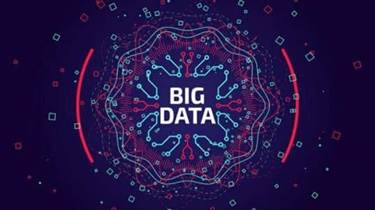Many times, though, issues with a product that go unresolved are often just as much a reflection of the quality of the testing that was done on the product as they are a reflection of the product itself. In other words, if your testing procedures are flawed and unable to reliably detect and resolve issues then continuous delivery is only going to take you so far. In addition to reducing the amount of maintenance that you have to perform by reducing the potential for bugs and errors, continuous delivery can also make the maintenance and updates that you do have to perform more efficient.

Key team members leave and a project gets handed to a team member without context. Handoff otherwise occurs from poor management and changing team member priorities while in action. The following is a list of seven types of waste found in software development or other creative work. In a supply chain, value stream mapping can root out costly delays leading to a finished product.
Great Companies Need Great People. That’s Where We Come In.
This is a complicated question to ask, and it’s one that will require significant planning. But if you’re looking to speed up your development life cycle, and deliver a more consistent product, then Continuous Integration/Continuous Delivery might be ideal for your company. The SDLC model has been used for years and it has served the industry well. However, with the advent and widespread usage of containerized applications, the old model doesn’t really work all that well.

CircleCI works preferably with GitHub, GitHub Enterprise, and Bitbucket. CircleCI received the „Leader in Continuous Integration“ award from Forrester in 2017. The first container is free of charge, the second one is $50 per container per month. Thanks to continuous delivery, you can test every edit and enhancement made to the software (i.e. every change to the source code) in real time in order to collect feedback. Unwanted side effects are quickly visible, allowing you to intervene at an early stage of development. This is especially handy because it makes it easier for you to determine which part of the code causes a bug, for example.
Poor Communication Between Teams
So as developers commit to the repository throughout the day, the next steps are automatically taken. Thanks to automation tools like Jenkins, the cycle moves from stage to stage continuously. Continuous Integration is the process that allows developers to integrate new code into a shared repository throughout the day.
As such, continuous deployment can be viewed as a more complete form of automation than continuous delivery. A new feature can sometimes be used in an unexpected way by the user. As a result, the load test that was performed during the dark launch may not be an accurate representation of the load that it will undergo when utilized by the user.
Principles of Quality Management
Despite its possible drawbacks, if used correctly by a team willing to commit to its principles, the advantages of Agile Methodology are numerous. The COVID-19 pandemic has made the need for adaptability in the face of uncertainty abundantly clear, and the future appears no more certain. While Agile methodology may not be the perfect fit for every project and situation, its principles can be selectively adapted to any type of project to help keep a team light on its feet and ready to face anything. In the mid-nineties, people working for software development companies began to come to the realization that “business as usual” simply wasn’t working for them. The traditional business model involved extensive planning, rigid constructs, and bureaucratic hurdles that stifled creativity and made it nearly impossible to adapt to change or adeptly handle the unexpected. In response, software developers began to combine old ideas with new until they found a combination that worked for their situation.

At expert level some organizations choose to make a bigger effort and form complete cross functional teams that can be completely autonomous. With extremely short cycle time and a mature delivery pipeline, such organizations have the confidence to ci cd maturity model adopt a strict roll-forward only strategy to production failures. Continuous delivery promises to improve the reliability of your product testing procedures both by testing code in „bite-size“ chunks and by automating many testing procedures.
Why DevOps on AWS is THE choice
Generative AI will be a game changer in cloud security, especially in common pain points like preventing threats, reducing toil from repetitive tasks, and bridging the cybersecurity talent gap. This is your go-to resource for the latest news and tips on the following topics and more, XaaS, AWS, Microsoft Azure, DevOps, virtualization, the hybrid cloud, and cloud security. If you’d like to face the future putting the tenets of Agile Methodology into practice, consider earning your Agile Certificate. Demonstrate to employers that you are willing to put forth the commitment to succeed. Contact CCAPS at the University of Minnesota to learn more about our Agile Certificate and Agile Scrum Certificate, which includes Certified ScrumMaster® and Certified Scrum Product Owner® options.

The principles and methods of Continuous Delivery are rapidly gaining recognition as a successful strategy for true business agility. ” How do you start with Continuous Delivery, and how do you transform your organization to ensure sustainable results. This Maturity Model aims to give structure and understanding to some of the key aspects you need to consider when adopting https://www.globalcloudteam.com/ Continuous Delivery in your organization. Since 1997, we’ve delivered a startling amount of software solutions to a diverse range of industries. Watch our videos to learn more about continuous delivery, its benefits, and how to implement it using AWS CodePipeline and AWS CodeBuild. It can be developed continuously because the release process is also largely automated.
Continuous integration vs. continuous delivery
Continuous delivery is an innovative concept in software development that is becoming increasingly popular. With continuous delivery, the production steps of development, quality assurance, and delivery are not final, but are repeated automatically in a loop during the development process using the continuous delivery pipeline. This has the advantage that you can subject software products to a quality check piece by piece and at short intervals and deliver them while you’re still working on the product. You receive constant feedback in the pipeline, allowing you to improve the software immediately after each change to the source code.
- It can also make routine maintenance difficult, and has less room for product customization, which is becoming more common in today’s consumer markets.
- So no matter how proactive the development team may be, sometimes the users can cause issues by putting strain on a system in an unexpected manner.
- One of the main benefits of containerized applications is the speed at which they can be created and deployed.
- The Kaizen mindset drove the rapid growth of companies such as Toyota.
- As is so often the case in life, continuous integration communication is an important factor.
- As Pleo scaled to more than 150 engineers, they needed to transform how they supported their increasingly complex infrastructure.
13 developers on StackShare have stated that they use Continuous Delivery Service. This allows the administration to organize all the working shifts in accordance with the needs of the patients and the skills of the available nurses. Files need to be moved from one environment to another, which can be time consuming. To make sure that you can manage this kind of source well, version management is useful. With suitable software, it is much easier to keep track of numerous employees. Traditionally, cutting over to a new application causes users to experience a period of downtime.
The pros and cons of CI/CD pipelines
Top DevOps teams deploy new code 208 times more frequently than WHOM. Do your customers feel like it takes too long to deliver new features or improvements to a product? Defects are similar to partially completed work but can be more wasteful because defects are unknown and partially completed work is usually known ahead of time.
